
Sulfur mining work begin really early to the bottom of Ijen crater. Dark shadows move quickly collecting yellow sulfur pieces through clouds of hot, toxic gases protected just by a scarf or, for the lucky ones, a gas mask.
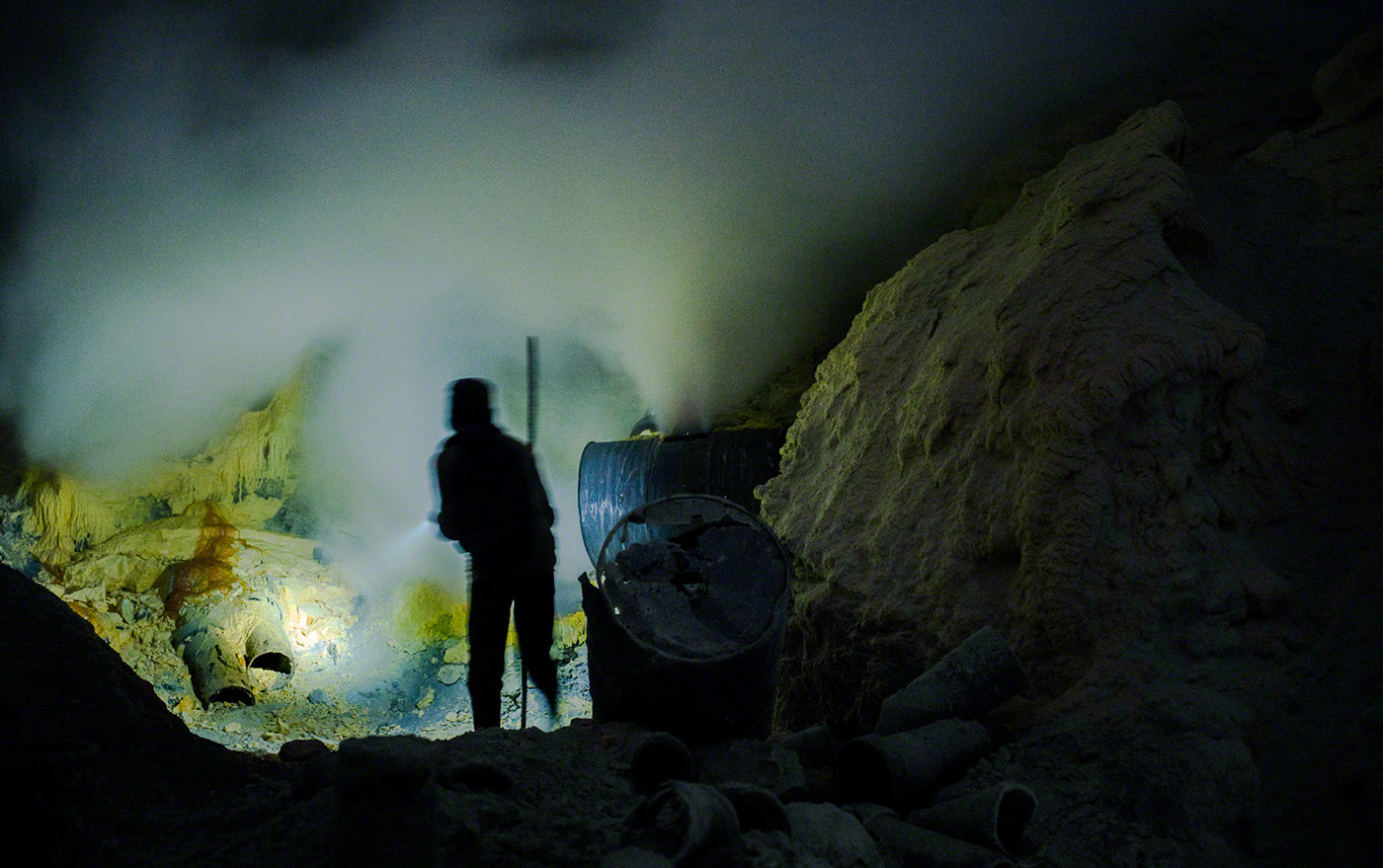

Initially, sulfur gases were channeled by building direct routes to the bottom of the crater with surrounding rocks. Subsequently the stones have been replaced by ceramic tubes. Sulfur liquefies in the descent, it accumulates in pools and solidified by further cooling. Some workers have the task of maintaining the tubes in good efficiency by replacing the damaged ones.

Solid sulfur is collected by the miners by breaking it into pieces through the palanquins or simple metal poles. Often, wind pushes the toxic clouds towards the base of the crater investing workers who are often forced to move away in order to breathe.




Pieces of sulfur are grouped and balanced in baskets used for transportation. Each load consists of two baskets for a weight between 75Kg and 100Kg.

Once they brought down the sulfur from the volcano, miners are encouraged (by paying meager surplus) to carry back basic necessities such as drinking water for other workers.
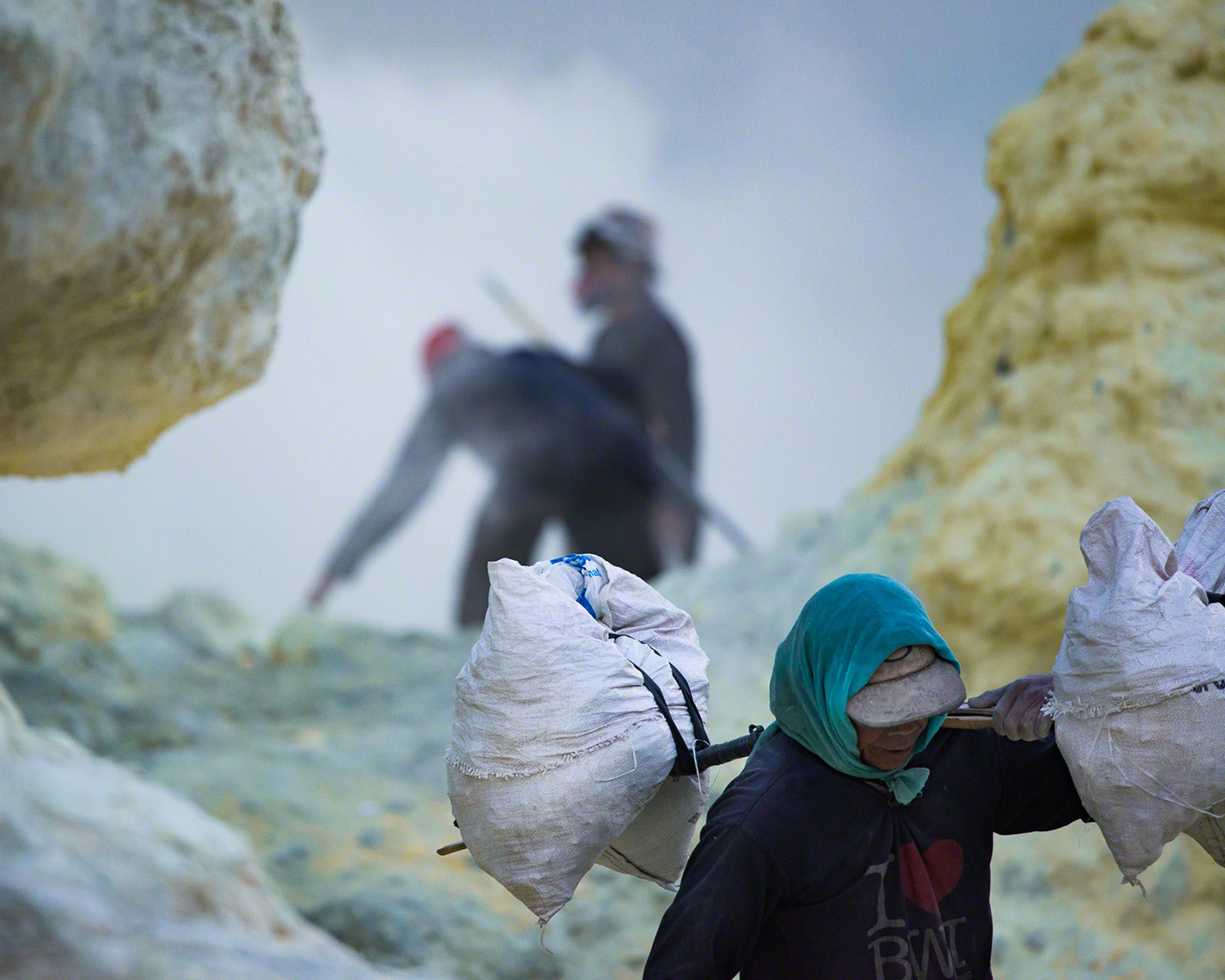


Life expectancy of a miner sulfur is 50 years. They suffer from burns to their back and deformations caused by overexertion. Despite this, they carry out this work (earning approximately $ 12 per day) to allow their children to have a good education. The strong smells and yellow dusts of sulfur never leave their skin.

80% of the sulfur extracted from Kawah Ijen is bought for bleaching sugar. The remaining part contributes to the production of goods such as cosmetics, fertilizers, gunpowder, etc.

Miners climb the crater from the base to the top, back down to the weight station (halfway the base camp) at which a receipt of their load is issued. Typically the daily amount of sulfur required from a single miner is transported in two trips.
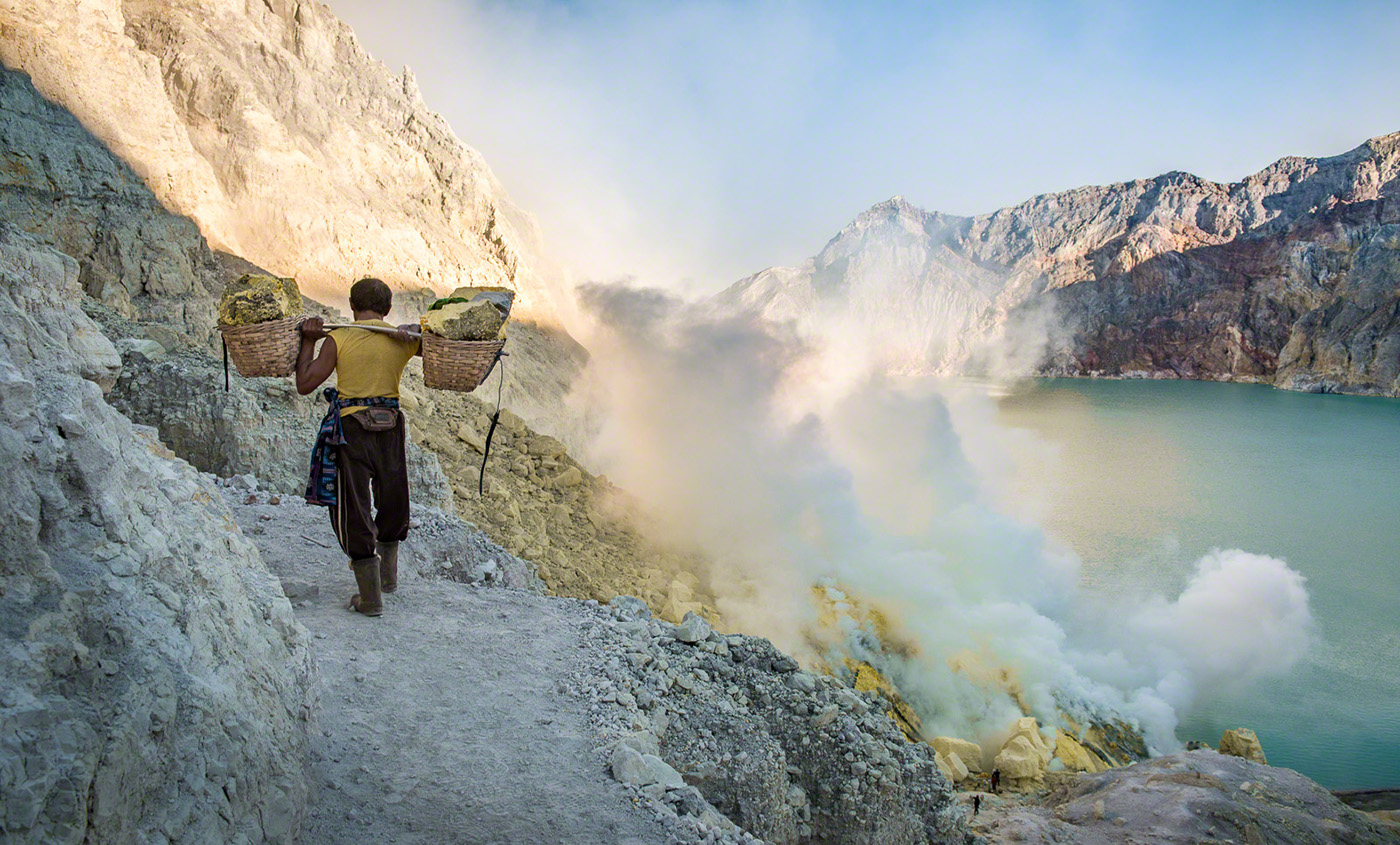
In the old days, sulfur was brought by foot from weight station to the nearest village, 27Km away. Today is brought to the base camp with the aid of manual carts (which allow the transportation of two or three loads at a time) and left so it can be collected by trucks that bring it to refining plant.
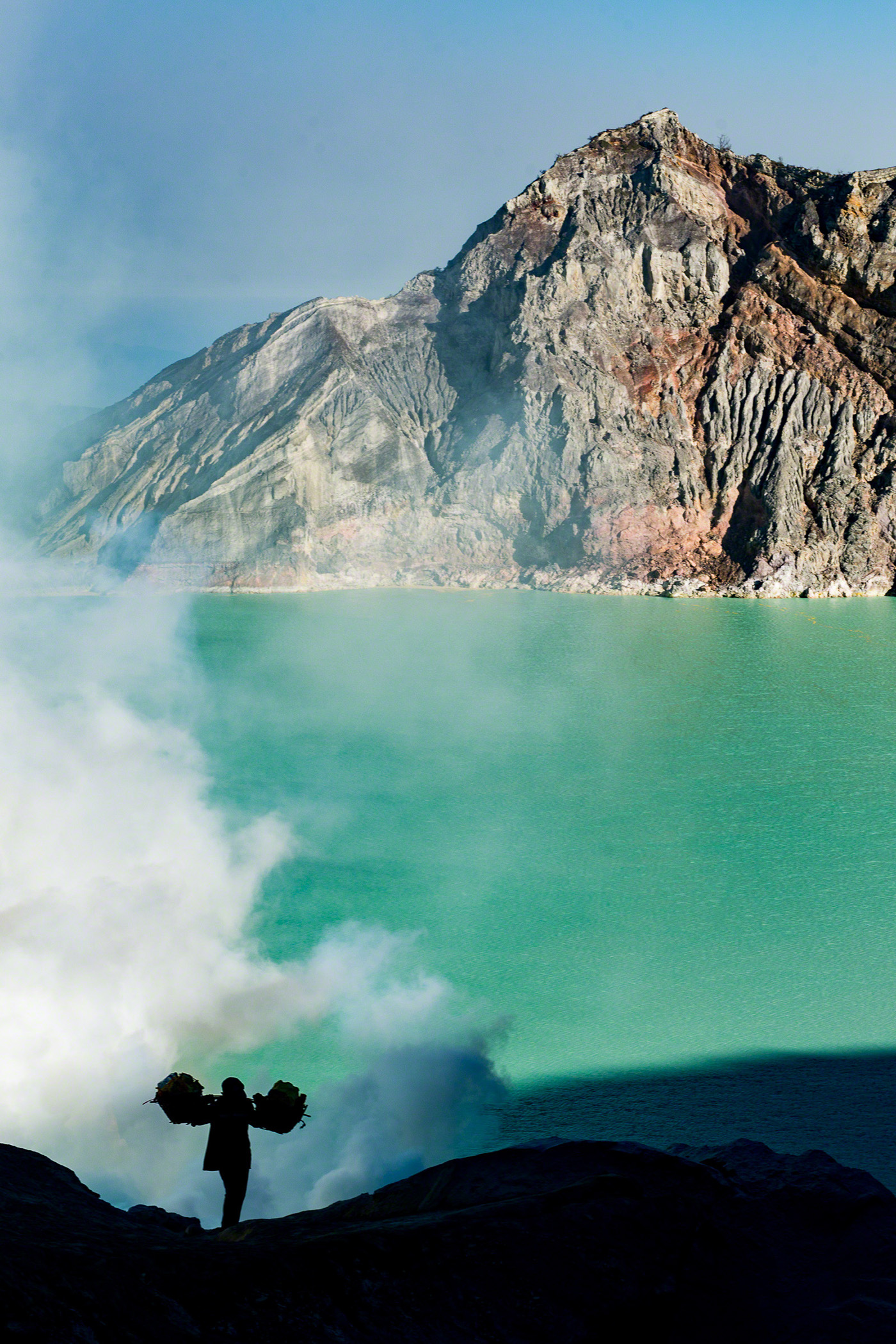
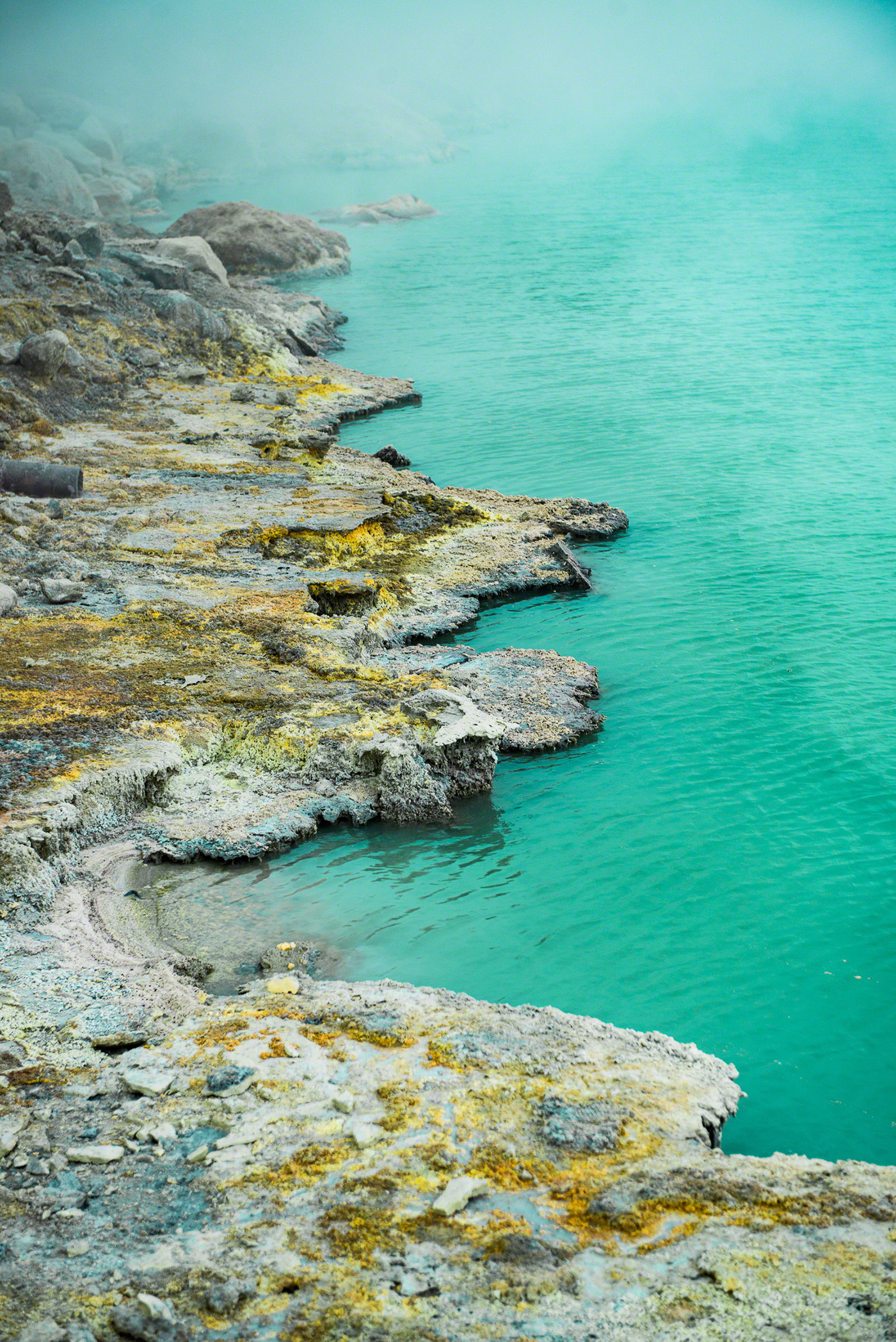
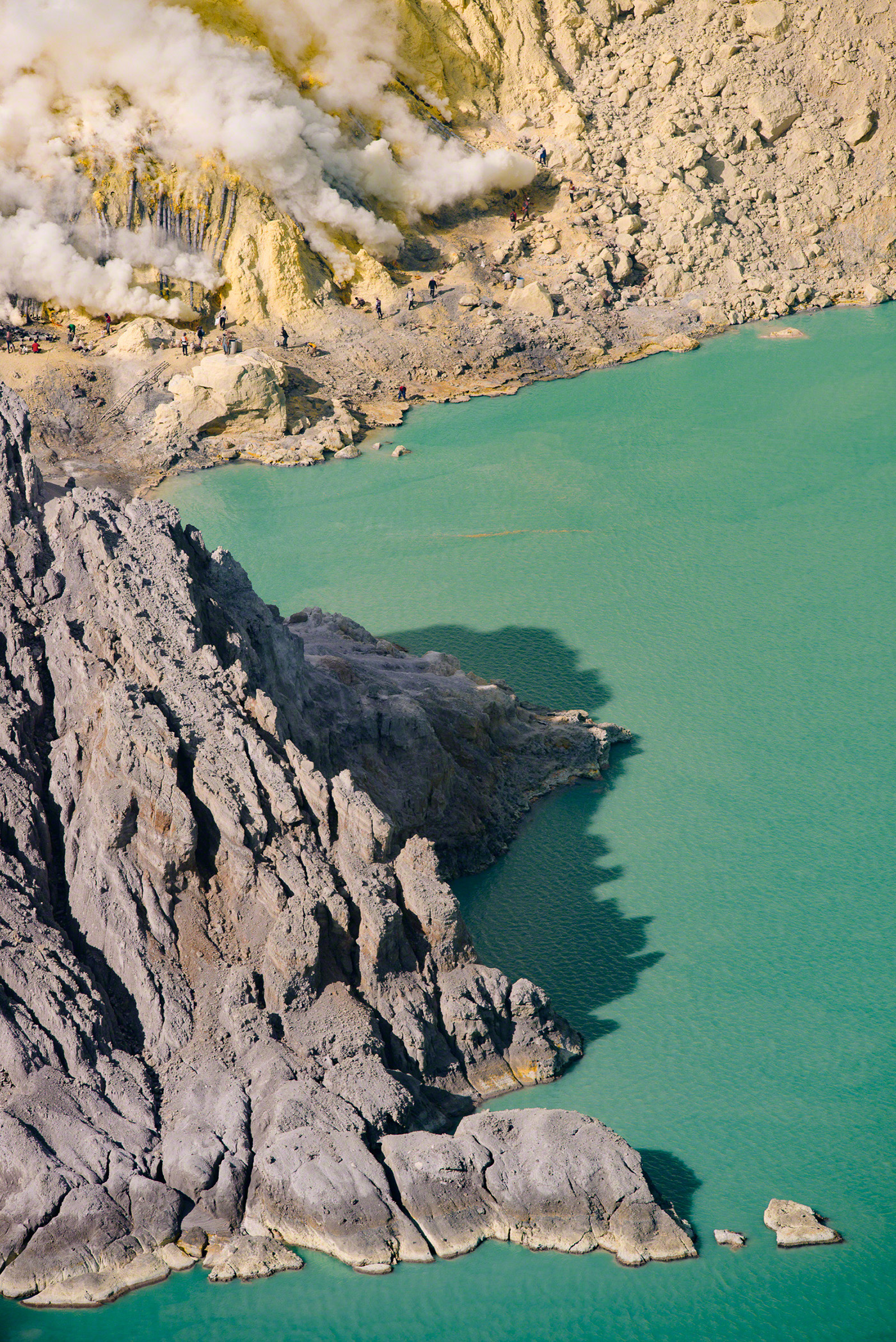

A view of the crater of the Kawah Ijen volcano and its lake, one of the most acidic in the world. Sulfuric gases from the mine rise mixing with surrounding clouds. On the opposite side of the crater, about a kilometer wide, a dam was built to contain the pollution of waterways exploited for agriculture. Here, hundreds of miners risk their lives every day to allow their families a better life.

